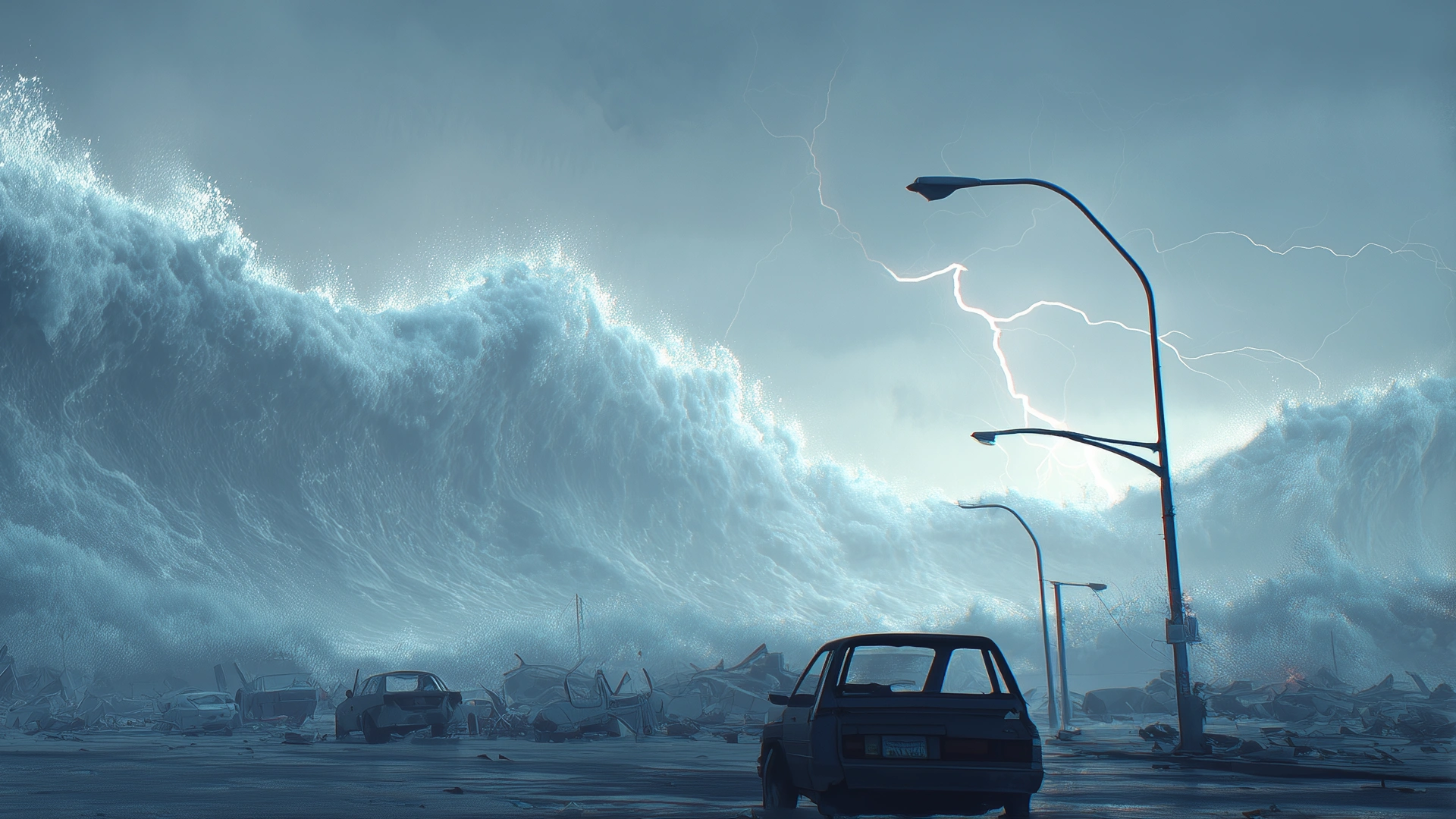Try to survive, and don’t forget to breathe.
What if you're just working in your garden? Or if you're a concierge in an apartment building? Suddenly, deafening sirens echo: within five minutes, a tsunami is rushing your way. What now? Get to higher ground as quickly as possible — exactly what the government itself recommends. If you have those few minutes, use them wisely: grab water, something to eat, and a lamp. With these basics, you can survive for two to five days if you reach the roof of an apartment building, or, with a bit of luck, just the roof of your own house. Not an option? If necessary, climb a sturdy tree and hold on tight.
Patience pays off... they say.
It sounds simple, but in that moment, it's anything but.
When the waves roll in, there's nothing you can do. Do you see people being swept away by the water?
As harsh as it sounds, let them go.
At that moment, it's every man for himself. Only if you are 100% sure that you will survive too can you try to help.
Otherwise, don't. Because your death won't help anyone.
💡Extra tip: If possible, bring a small first aid kit with you. It can make all the difference if you suffer deep wounds or cuts while traveling.
Preparing
Sometimes you get lucky: a warning can give you maybe a few minutes before the wave hits.
Use that time wisely. Put on sturdy clothes—pants, a jacket, and boots—
anything that can protect you from flying debris in the water.
💡Extra tip: Always keep something handy that can float— a piece of wood, an empty barrel, or even a door. It can give you a few extra minutes or hours in the water.
Did you know?
The tsunami of December 26, 2004, in the Indian Ocean was caused by an earthquake measuring 9.1 on the Richter scale.
The waves reached heights of up to 30 meters and traveled at speeds of up to 800 km/h — about as fast as a passenger plane.
👉 The result: more than 230,000 deaths in 14 countries.

